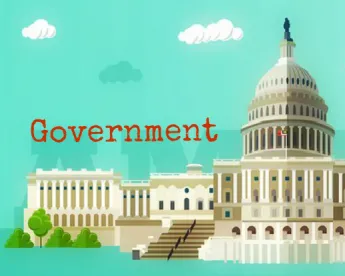The White House has clarified the requirements of one of the new federal measures that will require employers to ensure employees are vaccinated against COVID-19. Specifically, the White House has issued binding Guidance confirming the requirements of President Biden’s September 7 Executive Order concerning COVID safety for federal contractors and subcontractors. Although this Guidance leaves some questions unanswered – including questions about the separate and forthcoming OSHA emergency temporary standard and CMS/CDC requirements – it nevertheless clarifies several key details for federal contractors and subcontractors so that they can prepare to satisfy their obligations.
1. Key Requirements
The Guidance and Order impose three specific requirements on covered federal contractors and subcontractors. First and most significantly, covered entities must ensure that their covered employees are vaccinated against COVID-19. (The following section discusses which contractors and employees are covered by the Order.) Unlike the upcoming OSHA standard, the Guidance and Order do not allow entities to avoid mandating vaccinations if they regularly obtain negative tests from employees.
Second, covered entities must ensure that employees satisfy certain new requirements with respect to wearing masks and physically distancing when working at covered workplaces. Finally, the Guidance and Order impose certain procedural requirements, most namely by requiring covered entities to designate a specific official to oversee COVID safety protocols at covered workplaces.
Notably, the Guidance and Order does not supersede or negate other COVID safety legal requirements that may exist for an employer. For example, even though the Guidance and Order themselves do not require an employer to provide an employee with paid leave to get vaccinated, the upcoming OSHA standard or applicable state law may separately require an employer to do so.
2. Coverage and Timing
The White House and its Task Force drafted the Guidance broadly in terms of which employers and employees it covers.
In terms of covered employers, the Guidance and the Order generally apply to all prime federal contractors and any subcontractors (of any tier), where that entity either (a) enters into a new contract on or after November 14 to provide services to the federal government, (b) enters into such a contract between October 15 and November 13 where the agency elects to apply the obligations, or (c) after October 15, extends or renews a contract for services to the federal government.
Thus, the Guidance and Order do not directly cover contracts that were entered into before October 15 (and not extended or renewed after that date), and they also do not directly cover a small range of other federal contracts (including those with subcontractors who simply provide products and those valued below the “simplified acquisition threshold” that is generally set at $250,000). Nevertheless, the Guidance encourages agencies to separately apply its requirements under otherwise-exempt contracts where agencies are able to do so. Also, as noted above, agencies are encouraged to include the requirements in solicitations that are subsequently issued, regardless of when the contract will become effective. Accordingly, employers should proceed cautiously and ensure they fully understand their obligations before deeming a contract excluded based on its effective date, value, or subject matter.
In terms of covered employees, the requirements apply to a broad range of employees of covered contractors and subcontractors. The vaccination requirements apply to any employee of a covered entity so long as the employee is working full-time or part-time either (a) in connection with a covered contract (as defined above) or (b) at a covered contractor workplace (which is defined broadly to include almost any location controlled by the contractor that has any connection to a covered contract).
Notably, the Guidance creates no exceptions for remote employees to the vacation requirement. Thus, a covered contractor must require an employee working from home under a covered contract to become vaccinated. However, because an employee’s home is not a covered contractor workplace, an employee is not required to follow the additional masking and social distancing requirements when working from home.
Finally, regarding the timing, the vaccination requirements become effective December 8, 2021 for covered employees under covered contracts. Nevertheless, while this may seem to afford employers with a fair amount of time to become compliant, experienced employers understand that facilitating vaccination is not a simple endeavor. Further, it is very likely that the vaccination requirements under the separate OSHA standard and CMC/CDS requirements will become effective well before December 8.
3. Employees Requesting Disability and Religious Accommodations
The Guidance does create exceptions that will allow employers to provide legally required disability and religious accommodations. It recognizes that, when an employee is entitled under the law to a disability or religious accommodation from being vaccinated, that will exempt the employee from the Order’s vaccination requirements.
4. Open Questions
Unfortunately, the Guidance still leaves certain questions unanswered. Most notably, the Guidance does not clarify the other forthcoming COVID safety measures, such as the upcoming OSHA emergency temporary standard, the upcoming vaccination requirements from the CDC and CMS for certain healthcare entities, and any unique laws that any states issue requiring employers to mandate vaccinations. Thus, even if an employer falls outside the coverage of the Guidance and the Order, the employer may have a separate obligation to ensure employees are vaccinated.
The Guidance and the Order also do not define any specific penalty or consequence for noncompliance. That said, experienced contractors understand that the penalties can be severe for not satisfying the requirements of a federal contract, and agencies will have at least significant discretion to impose serious consequences for entities who do not satisfy the Order’s requirements. Further, if a covered entity does not satisfy the requirements of the Order, it also may be subject to additional penalties under the forthcoming OSHA standard or other laws and regulations. Therefore, all federal contractors and subcontractors should begin proceeding diligently to understand and satisfy their obligations with respect to employee vaccinations and COVID safety.




 />i
/>i

